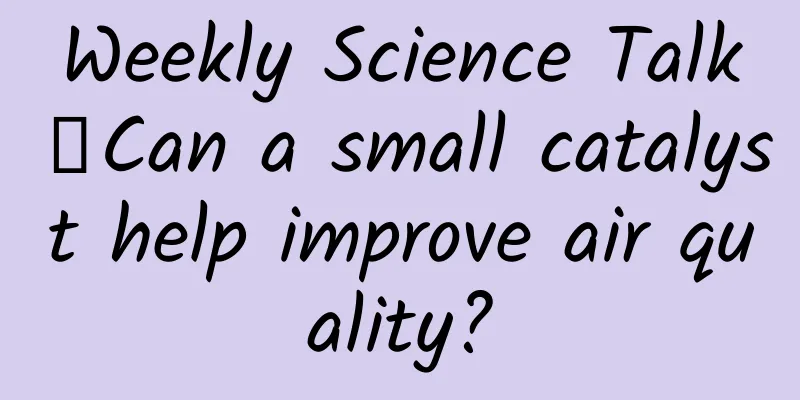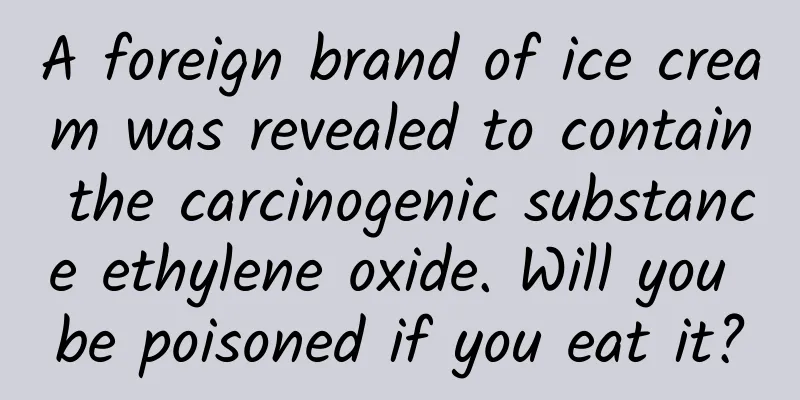Weekly Science Talk丨Can a small catalyst help improve air quality?

|
In August, the Ministry of Ecology and Environment reported to the media the national ambient air quality situation. From January to August, the average proportion of days with good air quality in 339 cities at prefecture level and above was 83.2%, and the average concentration of PM2.5 was 29 micrograms per cubic meter, up 3.6% year-on-year and down 17.1% from the same period in 2019. Do you feel that the air quality has improved in recent years? Especially those living in the north can clearly feel that there are more blue skies. Take Beijing as an example. Blue sky is no longer a "luxury". There are more and more good days. In 2022, there were 286 days with good air quality, 110 days more than in 2013. In other words, there were nearly 4 more months of good days. Generally speaking, the main culprits for air quality problems are: fine particulate matter (PM2.5), sulfur dioxide (SO2), nitrogen oxides (NOX), carbon monoxide and other atmospheric pollutants. To govern the atmosphere, we must start with these pollutants. Looking back at the prevention and control of atmospheric pollutants in recent years, we will find that the concentrations of PM2.5 and SO2 in the air have dropped significantly, but in comparison, the decline in NOX has not been so fast. According to the "Special Edition of the 2022 China Atmosphere Report", from 2011 to 2022, China's total SO2 emissions fell by 86%, while NOX fell by only about 58%. In other words, there is still a lot of room for NOX to fall. Why are NOX emissions more difficult to control? First of all, the source of NOX is more complicated than that of SO2. SO2 emissions mainly come from fixed sources, such as coal-fired power plants and industrial boilers, but NOX emissions also come from a mobile source - automobile exhaust. As a result, scientists have to study different NOX pollution control technologies to suit different scenarios. On the other hand, the NOX pollution control technology, also known as the selective catalytic reduction (SCR) denitrification technology, was applied later than the SO2 desulfurization technology. The application of SCR in different fields and industries also faces some problems. For example, in thermal power plants, SCR faces a dilemma: the combustion of coal and oil will release a large amount of smoke. If the SCR is arranged before the dust removal, the smoke will easily clog the catalyst and affect the efficiency of NOX removal. If the dust is removed first and then the SCR is arranged, the temperature of the flue gas will be relatively low and will not be within the active temperature range of the SCR technology catalyst. In industries such as ceramics and glass, there are alkali metals or heavy metals in industrial waste gas, and the SCR catalyst is easily poisoned and loses its activity. It is not difficult to see that catalyst is a key link in SCR technology. Existing catalysts cannot cope well with low temperature, smoke, or metal poisoning. However, Chinese scientists are also working hard to overcome this difficulty. Among them, the "Basic Research on Catalytic Purification of Nitrogen Oxides in Combustion Exhaust Gases" chaired by He Hong, an academician of the Chinese Academy of Engineering and deputy director of the Eco-Environmental Research Center of the Chinese Academy of Sciences, has designed a series of new catalysts that can effectively improve the activity of catalysts in low temperature zones. The research won the second prize of the National Natural Science Award in 2019. After in-depth research on catalytic reactions, the researchers have refined an efficient catalyst design principle, namely the principle of tight coupling of catalyst oxidation/reduction sites and acidic sites. Simply put, in a catalytic reaction, both redox sites and acidic sites are needed. During the design, these two sites need to be tightly coupled together so that the reaction can occur smoothly. For the same type of site, for example, if they are all redox sites, it is best to be highly dispersed on the surface of the catalyst to allow the catalytic reaction to occur over a larger area. Under this design principle, He Hong's team developed a series of new catalysts that perform better at low temperatures. Among them, the vanadium-based catalysts improved under the guidance of He Hong's team have been applied to industrial scenarios and installed on the exhaust purifiers of heavy-duty diesel vehicles, successfully reducing the nitrogen oxide emissions of diesel vehicles by more than 70%. It is believed that in the future, with further research on catalysts and the industrial promotion of research results, controlling nitrogen oxide emissions in the atmosphere will no longer be a problem. Author: Fan Kexin, Master of Imperial College London Gatekeeper: Zhu Yehua, deputy editor of Science and Technology Herald
Xinhuanet Co-production |
Recommend
What are the differences in operational work between different platforms?
This question comes from a reader who said that h...
Why is bidding promotion ineffective? Just read this article | How to improve promotion effectiveness?
The low conversion rate of SEM promotion is a com...
The operational procedures of event planning scheme are universal!
This template is a relatively general activity te...
Behind WeChat’s crazy “ban”: the pain of WeChat Pay
WeChat has been really willful recently, banning ...
The dumb way to promote App online, the qualitative change from 0 to 1 million users
There are some stupid ways to promote apps online...
A complete App operation and promotion plan!
1. Concept of App operation and promotion Quoting...
Monetization tips for educational short video hosts!
A name that seems to be full of clickbait titles....
Will Russia cooperate with Huawei on 5G? What's the matter with Russia's 5G cooperation with Huawei?
Will Russia cooperate with Huawei on 5G? What'...
Using pointers in Swift
Apple hopes to minimize the appearance of pointer...
Why do most programmers' side projects die?
[[145115]] We all have those side projects that e...
Who is the next Perfect Diary? Re-answering "Changes in Chinese Brands in 2020"!
“What has changed in our world?” 1. New brands: N...
10 typical creative materials to reveal the promotion skills of lifestyle APP
Compared with other apps, apps for food, drink, e...
Brand advertising creative template!
I have always loved watching commercials. After a...
What? Natural gas can actually be used for cooling after burning!
Produced by: Science Popularization China Author:...
Haier SmartCare smart socket experience: even if you forget to turn off your appliances, you can go out with peace of mind
If the concept of smart home is not as hot as it ...









